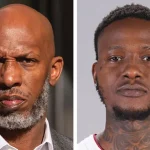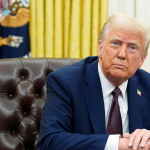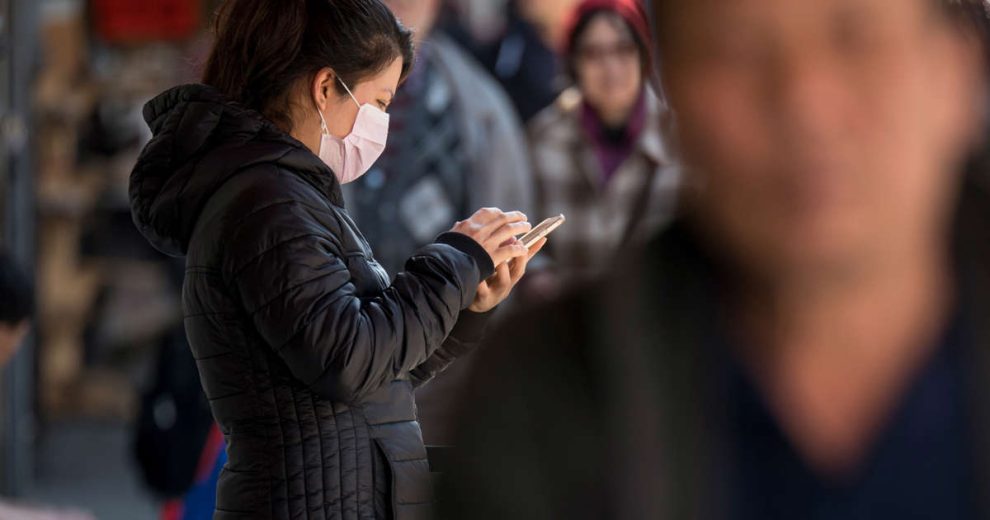A new report spotlights how disinformation not only pits Asian Americans and Pacific Islanders against other marginalized groups but also sows divisions within the community itself, sometimes to intentionally diminish its collective political influence.
The study, released last week by a coalition of Asian American and Pacific Islander organizations, analyses the landscape of disinformation, or misleading information disseminated with the intent to harm, often for political agendas or profit.
Researchers, who identified key practices behind the spread of disinformation, highlighted the Men’s Rights Asians movement, the prevalence of casteism and social media aggregators of Black-on-Asian crime as examples of “bad actors.”
Those spreading disinformation often aim to attack and break down collective groups within Asian America, seeking to render them less powerful. In turn, they often help sustain white supremacy, the report says.
“What disinformation effectively does is dilute the unified possibility of an Asian American bloc,” said Thenmozhi Soundararajan, the executive director of Equality Labs, a civil rights organization aimed at fighting caste oppression, who contributed to the report.
The report was released by the Asian American Disinformation Table, a coalition anchored by the National Council of Asian Pacific Americans and co-chaired by several groups, including Asian Americans Advancing Justice-Asian American Justice Center. Researchers looked at a variety of sources, from transnational news outlets, or those that are distributed across borders, and ethnic media, to platforms like WeChat and WhatsApp, where disinformation is often amplified.
Researchers found three key themes: the use of Asians as wedges against other communities of color; the exploitation of class, caste, ethnicity and other internal differences to “promote interests that hurt those most vulnerable in our communities”; and the weaponization of current and historical traumas to further nationalist, racist or casteist interests.
Many of the narrative themes are commonly found in the messaging of the Men’s Rights Asians, or MRAsian, subculture, a study in the report said. The movement of anti-feminist men subscribes to the belief that Asian Americans are the most oppressed racial group, the research says. The subculture also equates perceptions of Asian women as sexually desirable and hypersexual with “proximity to whiteness,” the research says, and in turn promotes the idea that women in the community get “preferential treatment” compared to men.
“Asian women who speak out against anti- Blackness within the Asian American community date non-Asian men, or commit other ‘traitorous’ acts are especially vulnerable to abuse, vitriol, and even doxxing or threats of physical violence,” the report reads.
Because of such views, common behaviors in the MRAsian space include attacks on affirmative action, the perpetuation of the Black-on-Asian crime trope and attacks on those within their own communities as “boba liberals,” a term used to advance a conservative, pro-Asian agenda to attack people who they say are shallow “race traitors.”
Researchers also pointed to casteism and a widening of religious fault lines in recent years as another space for disinformation. While the South Asian communities in the U.S. have a history of coalition building, the internal tensions across caste and religion, paired with historical trauma, have become “active sites of friction” because of inflamed religious ethnonationalism in many South Asian countries, the report says.
The Hindu nationalist movement, which promotes the stances of the ruling party in India, the Bharatiya Janata Party, for example, has grown significantly while advancing Hindu nationalist identity and policies. It includes those who support establishing India as an ethno-Hindu nation-state. Prime Minister Narendra Modi and the party have repeatedly been accused of espousing anti-Muslim rhetoric and inflaming bigotry and disinformation; the party has said it is “strongly against any ideology which insults or demeans any sect or religion.”
Oftentimes, the report said, such nationalist groups might push for positions counter to the beliefs of the broader South Asian community and other groups of color while lifting up immigrant groups that they say fit their definition of “deserving” or “skilled.” Some Hindu nationalist organizations, for example, supported the increase of H1-B visas and the expediting of green card processing for Indian immigrants, for example, opting for higher processing fees that would help pay for a wall at the U.S.-Mexico border, the report says.
In recent years, a network of social media accounts that spotlight incidents of Black-on-Asian assault have sprung up across Instagram, YouTube and TikTok, becoming another area of disinformation, the report says. Many such pages weaponize the Asian community’s anxiety and fear during the coronavirus pandemic, frequently post violent videos without proper context or unearth old incidents to stoke racial discord.
“There’s been a lot of narratives that try to conflate something like affirmative action with anti-Asian discrimination and anti-Asian hate and really capitalizing and exploiting the traumas that our communities have faced,” said Jenny Liu, the disinformation and misinformation policy manager at Asian Americans Advancing Justice-Asian American Justice Center.
They also spread the idea that what they refer to as the liberal “woke” media is conspiring to suppress the “truth” about anti-Asian hate, and they regularly attack fellow Asian American scholars, journalists and politicians who call out anti-Black perspectives. Crimes statistics and other studies have found, however, that most of the offenders in anti-Asian hate crimes and other incidents, from both before and during the pandemic, have been white.
While many of the case studies in the report reflect extreme views, Soundararajan, of Equality Labs, said some groups have gained meaningful momentum over the years, often weaponizing moments of outrage, particularly during election cycles, to draw in a surge of supporters. The fringe movements, which might start out with just a few followers, could grow to affect local elections or beyond, influencing larger beliefs and perceptions.
Disinformation that gets significant play on social media can also make its way into mainstream media coverage, said Rachel Kuo, the research facilitator of the report, particularly when prominent people with large followings who do not have histories in on-the-ground work lift up harmful narratives. In the past, Kuo said, some celebrities’ misinformed solutions have been covered as examples of Asian American activism.
“There’s a disconnect between individuals who are prominent on social media and actual base-building and movement-building,” she said.
The study, in part, illuminates how mainstream media’s lack of consistent coverage of Asian American communities makes the group itself vulnerable to disinformation, said Pawan Dhingra, the president of the Association for Asian American Studies.
“Asian Americans, they’re more susceptible to this because their access to forms of news is narrowed by language, by what they’re familiar with,” Dhingra said.
He added that with few credible outlets to turn to, many Asian Americans who consume disinformation are left poorly informed, making decisions based on false information or spreading their own through WeChat or WhatsApp or other platforms.
With language, trauma and other fractures complicating access to accurate information, researchers say, fighting disinformation poses many challenges; however, some groups have been pushing back successfully. One project, Viet Fact Check, contextualizes, translates and fact-checks mainstream news into articles using culturally and linguistically competent Vietnamese terms.
Another group, Tayo, helped connect Filipino communities to information and services during the pandemic, as well as refuted misinformation on social media. The project used kwentuhan, traditional Filipino oral storytelling, in its work in addition to data collection.
“The battle for facts is not about evidence. It’s really about power. And we’re in this moment now where our communities can’t just tell our truth,” Soundararajan said. “We have to be able to defend our truth with relationships of mutuality and power.”
Story cited here.
























